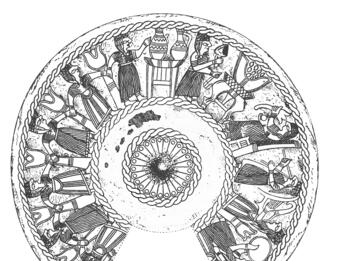Ancient Israelite Paintings from the Biblical Period
Surviving murals and paintings from the biblical period give us invaluable insights into daily life in ancient Israel.
The only murals currently known from the Iron Age Levant were found at the site of Kuntillet Ajrud, in the northeastern Sinai desert, approximately nine miles (14.4 km) west of the modern border between Egypt and Israel. In addition to the murals, there are drawings on some of the large storage jars (pithoi) found at the site. The remains are from the late ninth to early eighth centuries BCE (Iron Age IIB). Inscriptions from the site indicate that, despite the southern location, it was connected to the Northern Kingdom of Israel. The murals suggest that it was a site of some importance, but its exact function is unclear. It seems to have been a trading outpost of the Northern Kingdom, and although it was not a religious site, some religious activities were apparently performed there.
The imagery on the murals and storage jars depicts activities of a king and his court and various flora, fauna, and hybrid creatures. These are all well-established themes in ancient Near Eastern art, although the images are much more simplistic and schematic than those in contemporaneous imperial art. The themes and style are related to contemporaneous North Syrian and Phoenician sources. The murals are well executed in shades of red, yellow, and black paint on a light background of plaster. In contrast, the images on the storage jars are hastily drawn in red or (in a few cases) black and appear to be unrelated to each other. They are of a lower standard than the murals and may have been preliminary sketches for them. The images on the jars are unrelated to the inscriptions that are interspersed with them, and in some cases overwrite them; the inscriptions were apparently added at a later date.


